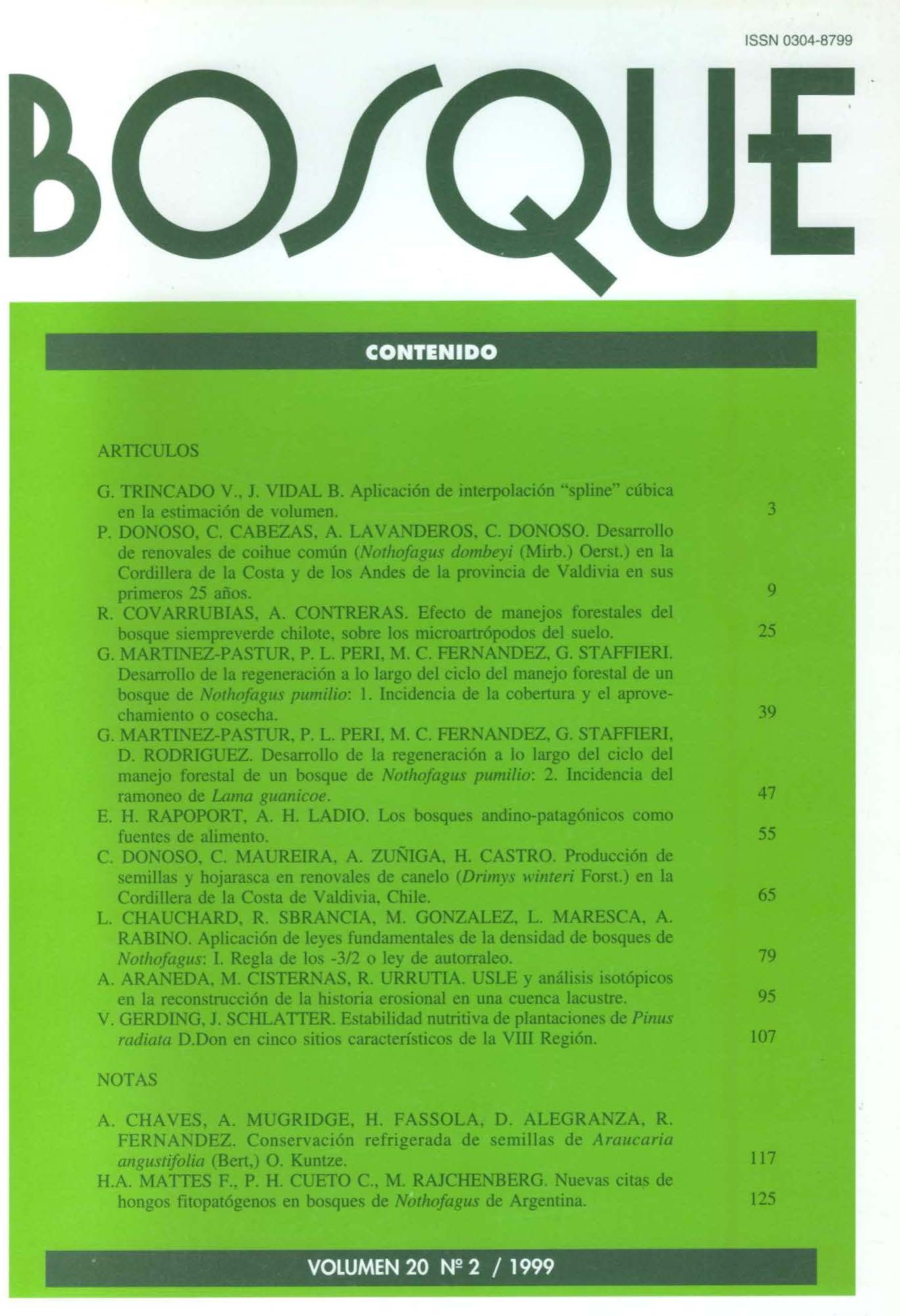Seed and litter production in second growth forests of canelo (Drimys winteri Forst.) in the Coastal Cordillera of Valdivia, Chile
Main Article Content
Abstract
Drimys winteri grows under different conditions in many different types of forests. Because there is data on seed and litter production of this species in late succesional stages of evergreen and Alerce forests, it was considered interesting and complementary to perform a similar study on second growth forests of Drimys winteri that represented an initial succesional stage within the evergreen forest type. With this objective, a trial was carried out in canelo second growth forests, where an experimental silvicultural design for thinnings had been set up. The objectives of the essay were to identify tendencies on seed and litter production inter and intra-annual variation for Drimys winteri in a second growth forest and to learn about the effects of thinnings on seed production. The essay was set up in 3 control plots and 3 plots thinned at 3 x 3 m. The plot surface was 600 m2 . Six 0.1 m2 boxes were set up in each plot. Tendencies in seed production as well as intra and inter-annual variation during 8 one-year consecutive periods were similar between thinned and non-thinned plots. Despite the fact that peaks of seed production were found in April and March in second growth forests, mean value for January could increase if more information for such month would become available. If this were so, the tendencies for Drimys winteri in second growth forests could be similar to those of late succesional evergreen forests and Alerce forests. The values of annual litter production were somewhat higher in the second growth forests, according to the larger size and weight of canelo leaves and fruits in relation to those of the other species of the evergreen and Alerce forests. These average values are within the range of low values of these wet, cold or temperate forests. A tendency to a cycle of one year of high seed production and 2 or 3 years of low or null production in second growth forest was found. This is similar to the tendency shown by canelos growing in Alerce or evergreen forests, even when high and low production years do not necessarily coincides in the three types of canelo populations.

